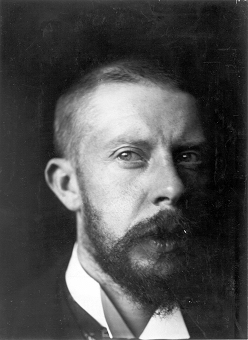
George Hendrik Breitner was a Dutch painter and photographer. An important figure in Amsterdam Impressionism, he is noted especially for his paintings of street scenes and harbours in a realistic style. He painted en plein air, and became interested in photography as a means of documenting street life and atmospheric effects – rainy weather in particular – as reference materials for his paintings.
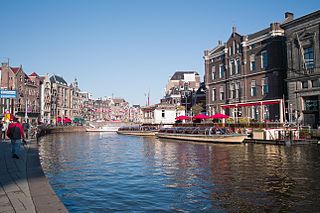
The Rokin is a canal and major street in the centre of Amsterdam. The street runs from Muntplein square to Dam square. The Rokin canal used to run from Muntplein square to Dam Square, but in 1936, the part between Spui square and Dam Square was filled in. Canal boats are now moored on the remaining part of the water, from the Amstel to Grimburgwal.
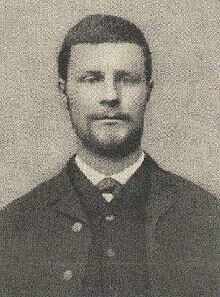
Anthon Gerard Alexander van Rappard was a Dutch painter and draughtsman. He was a pupil of Lawrence Alma-Tadema. He was also a friend and mentor of Vincent van Gogh for about four years, who is said to have appreciated him for his social engagement, amongst other reasons.

Willem Arnoldus Witsen was a Dutch painter and photographer associated with the Amsterdam Impressionism movement.
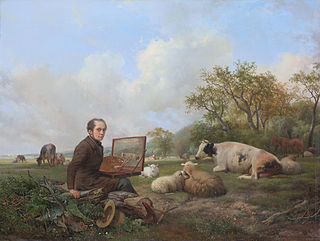
Hendrik (Hendrikus) van de Sande Bakhuyzen was a Dutch landscape painter and art teacher. He was a prominent contributor to the Romantic period in Dutch art and his students and children founded the art movement known as the Hague School. Like his contemporaries Edward Williams, Jacob Maris, and Jozef Israëls, he was part of a family of prominent painters, including son Julius van de Sande Bakhuyzen, daughter Gerardina Jacoba van de Sande Bakhuyzen, and nephew Alexander Hieronymus Bakhuyzen.
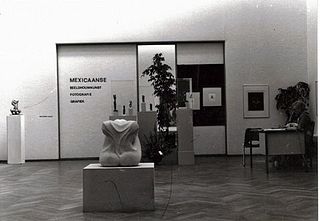
Pulchri Studio is a Dutch art society, art institution and art studio based in The Hague ('s-Gravenhage), Netherlands.
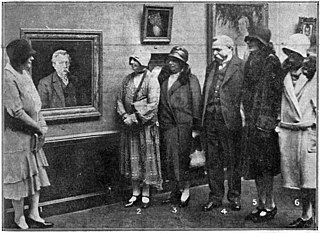
Hendrika Cornelia "Rie" de Balbian Verster-Bolderheij was a Dutch painter. She attended the Dagtekenschool voor meisjes in Amsterdam. She submitted some of her work into the "Paintings" event of the "Mixed Painting" category of the art competitions at the 1928 Summer Olympics, but did not win a medal.
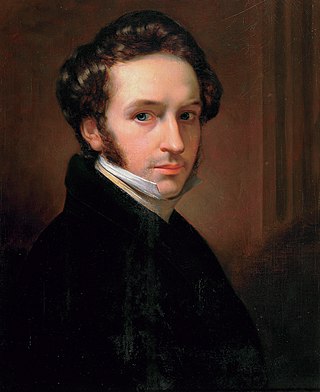
Jan Adam Kruseman was a Dutch painter, known primarily for his portraits, although he also did landscapes and genre scenes.
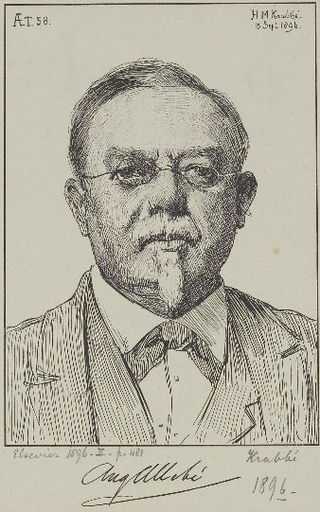
August Allebé was an artist and teacher from the Northern Netherlands. His early paintings were in a romantic style, but in his later work he was an exponent of realism and impressionism. He was a major initiator and promoter of Amsterdam Impressionism, the artist's association St. Lucas, and the movement of the Amsterdamse Joffers. Amsterdam Impressionism – sometimes referred to by art historians as the School of Allebé – was the counterflow to the very strong Hague School in the movement of Dutch Impressionism. As a professor at the Royal Academy of Amsterdam he fostered a cosmopolitan attitude toward art and the promotion and motivation of his students, and provided a significant stimulus to developments in modern art.
The following is a timeline of the history of the municipality of Amsterdam, Netherlands.
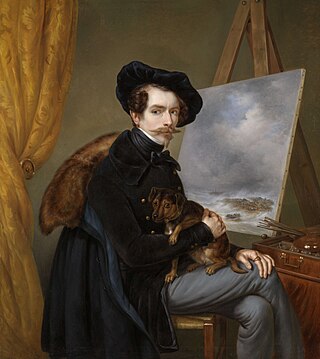
Johan Hendrik Louis Meijer was a Dutch painter, etcher, lithographer, and draftsman. He painted in the Romantic tradition and is best known for his seascapes.

Willink van Collenprijs is a former Dutch art award, which was awarded for the first time in 1880 by the Sociëteit Arti et Amicitiae. It was intended as an encouragement award for young artists, and was considered as a national counterpart to the Paris Salon. Its existence of more than 71 years proves the success of Amsterdam's art policy. For many of its winners, it was a valuable boost to their careers in the Dutch art world. Some of the prize winners were also recognized abroad and remain well known today.
Pauline Suij was an artist who attended the Royal Academy of Art, The Hague. She belongs to the second generation of the Hague School and of Amsterdam Impressionism. She was a member of the second of these two Dutch movements of Impressionism.
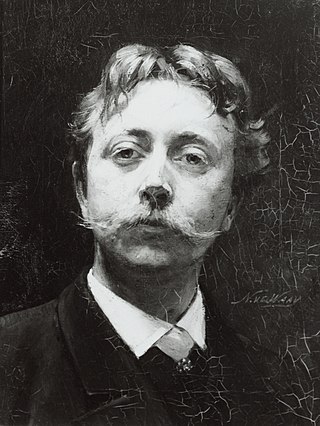
Nicolaas van der Waay (1855–1936) was a Dutch decorative artist, watercolorist and lithographer. He worked in many genres, including stamp, coin and banknote designs. He is perhaps best known for the allegorical illustrations he created for the Golden Coach and a series of paintings depicting the lives of girls from the Amsterdam Orphanage. His work was also part of the painting event in the art competition at the 1928 Summer Olympics.
Airco Caravan is a painter and conceptual artist based in Amsterdam and New York City.
Thomas Meyer zu Schlochtern is a Dutch art historian and curator, who came into prominence as director of the Arti et Amicitiae and as curator at Rotterdamse Kunststichting in the 1990s.
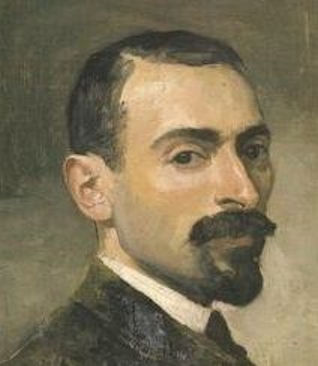
Johan Henri Gustaaf Cohen, known as Johan Cohen Gosschalk was a Dutch jurist, graphic artist and painter of Jewish ancestry. His sister, Meta Cohen Gosschalk, also became a well known painter.

Thérèse Ansingh who used the pseudonym Sorella (1883-1968) was a Dutch artist.

Henriëtte Johanna Reuchlin-Lucardie (1877-1970) was a Dutch painter.
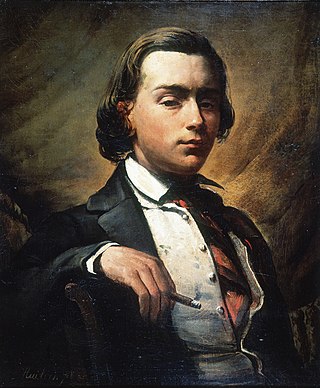
Jan Derk Huibers was a Dutch painter, graphic artist, and art teacher. He painted a wide variety of subjects, but is best known for his genre scenes. Some sources incorrectly give his year of death as 1919.





















